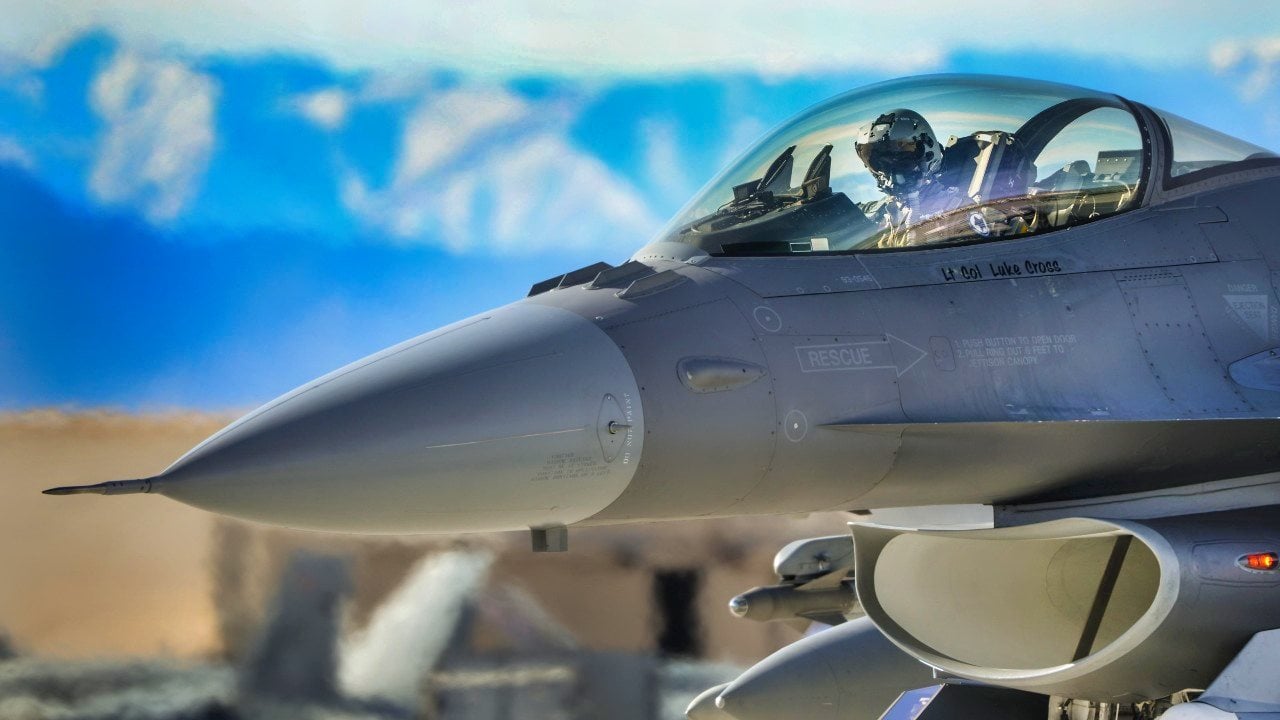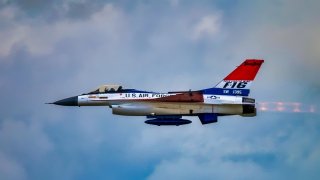Ukraine Has an F-16 Fighter Problem That Won't Be Easy to Fix
Ukraine has deployed U.S.-made F-16 Fighting Falcons in combat for the first time to counter Russian missile and drone attacks. While the initial results were promising, Ukrainian President Volodymyr Zelensky emphasized the need for more F-16s and trained pilots.
Summary and Key Points: Ukraine has deployed U.S.-made F-16 Fighting Falcons in combat for the first time to counter Russian missile and drone attacks. While the initial results were promising, Ukrainian President Volodymyr Zelensky emphasized the need for more F-16s and trained pilots.
-Despite recent deliveries and NATO pledges, Ukraine faces challenges in scaling up its air capabilities. Training programs, like the one in Romania, are essential but limited.
-Additionally, maintaining these advanced aircraft remains a concern, with discussions underway to use Lockheed Martin's facility in Poland, raising potential geopolitical risks with Russia.
Ukraine is Getting the F-16: It Needs More Pilots
The U.S.-made F-16 Fighting Falcon made its combat debut in the war in Ukraine this week, according to reports on Tuesday. The multirole all-weather fighters haven't engaged Russian combat aircraft or conducted ground attacks but instead were deployed to counter Russian drone and missile strikes on civilian infrastructure.
On Monday, Moscow launched its largest aerial attack on Ukraine to date in the ongoing conflict, targeting 15 of Ukraine's 25 oblasts. More than 200 missiles and drones were fired at civilian, energy, and fuel facilities. Multiple missiles hit a dam near Kyiv that is part of the city's hydroelectric power plant. Seven people were killed and nearly 50 more were injured.
Ukrainian President Volodymyr Zelensky confirmed that the F-16s were employed to help Ukraine down 102 missiles and 99 drones during the morning missile/drone deluge. It highlighted the capabilities of the Fighting Falcon during its baptism of fire with the Ukrainian Air Force.
"[The F-16 proved] a very good result," Zelensky told reporters during his daily press briefing, per the Kyiv Independent. "As part of this huge attack, we shot down some missiles and drones with the help of F-16s.
"We thank our partners for providing us with the F-16s. Of course, this is not enough, we don't have many of them, and we still need to train pilots," the Ukrainian leader added.
Kyiv had received its first ten F-16s earlier this month, although it is unclear how many are now in operation. NATO members Belgium, Denmark, the Netherlands, and Norway pledged to provide at least 79 of the fourth-generation aircraft.
More F-16s Needed, Along With More Pilots
Zelensky has called for additional aircraft, which he said are critical to Ukraine's air defenses. In addition, more F-16 Fighting Falcons in service in Ukraine could help the country's ground forces strike back at Russian positions.
Yet, the aircraft alone may not be what Kyiv needs. Even if additional aircraft are pledged, Kyiv will need more pilots to fly the Fighting Falcons.
Defense One's Audrey Decker reported this week that aerospace giant Lockheed Martin graduated the first batch of aviators last month from the training center it opened in Romania, and the company is now seeking to expand the program. A total of eight Romanian pilots earned their F-16 wings – and will operate the NATO member nation's aircraft that it has received from Norway.
If the facility could be expanded, additional pilots could be trained, including those from Ukraine.
"We could probably do upwards of 30 to 40 [pilots per year]," Frank St. John, chief operating officer at Lockheed Martin told Decker in an interview. "As Ukraine and the U.S. government determine what the best approach is for training Ukrainian pilots, if they determine that doing that in the Romanian center is the right approach, then we'll follow their lead and do that."
Ukrainian aviators have largely received a "crash course" of sorts, with the training on the F-16s reduced to several months instead of the years that Western pilots have received. However, Kyiv simply lacks the time as it remains under siege from Russia.
Maintenance is Another Consideration
Beyond just supplying the F-16s and training the pilots, NATO alliance members are now determining how the F-16s in service with Ukraine can be best maintained. As Defense One further reported, there are now discussions about servicing the Fighting Falcons at Lockheed Martin's maintenance facility in Poland.
That hub was built so that the F-16s in service across Europe wouldn't have to return to the United States for major maintenance and necessary upgrades.
"Our intention for that facility is that it'll be a regional facility, and so Ukraine is certainly in the region. So again, all of this comes under the guidance and auspices of the U.S. government and so it's certainly capable of doing that, but we'll follow the government's lead on how they want us to work Ukraine support," St. John explained.

Of course, the issue is how Russia may react to Ukrainian aircraft being serviced in "neutral" Poland. The Kremlin has already suggested that it would see the F-16s as legitimate targets, even outside of Ukrainian air space.
"Naturally, if they are used from airfields of third countries, they will be a legitimate target for us, no matter where they might be," Russian President Vladimir Putin told Russian pilots in March.
It is unlikely that Moscow's position has changed – and the question is whether Russia would actually strike the Polish facility knowing it would bring NATO into the war.
Author Experience and Expertise: Peter Suciu
Peter Suciu is a Michigan-based writer. He has contributed to more than four dozen magazines, newspapers, and websites with over 3,200 published pieces over a twenty-year career in journalism. He regularly writes about military hardware, firearms history, cybersecurity, politics, and international affairs. Peter is also a Contributing Writer for Forbes and Clearance Jobs. You can follow him on Twitter: @PeterSuciu. You can email the author: [email protected].
Image Credit: Creative Commons.


